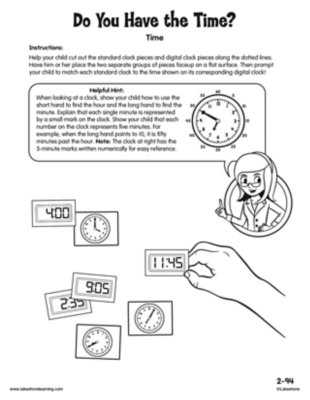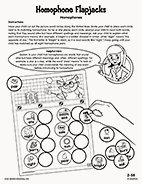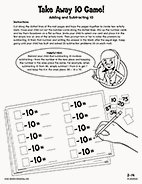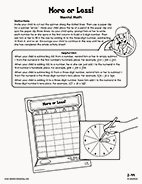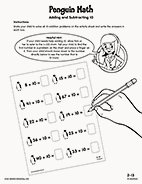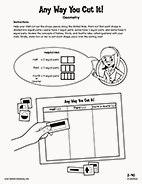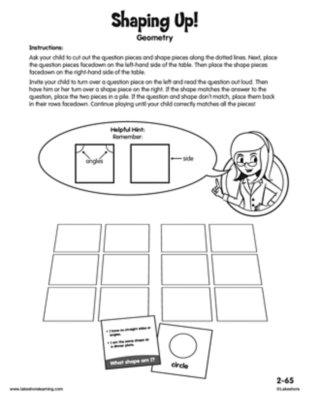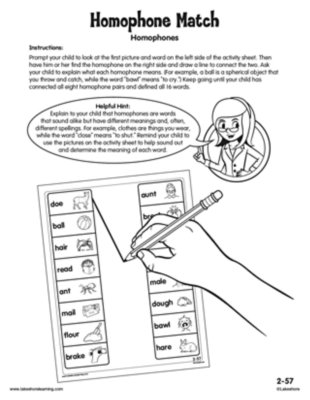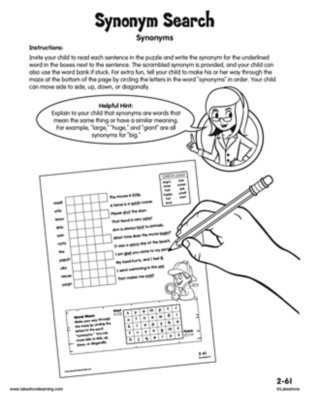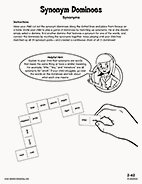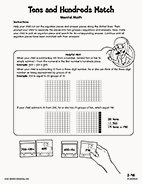Narrow by Grade
- Infant (0)
- Toddler (0)
- Preschool (0)
- Pre-K (0)
- Kindergarten (0)
- 1st (0)
- 2nd (11)
- 3rd (0)
- 4th (0)
- 5th (0)
- 6th & Up (0)
Grade
Narrow by Age
- 0-18m (0)
- 18-36m (0)
- 3 yrs. (0)
- 4 yrs. (0)
- 5 yrs. (6)
- 6 yrs. (4)
- 7 yrs. (11)
- 8 yrs. (8)
- 9 yrs. (9)
- 10 yrs. (4)
- 11 yrs. & Up (0)
Age 7 yrs.
0 results for "heavy" , here are results for "have"
During second grade, your child will learn to tell and write time from clock faces and digital clocks to the nearest five minutes. For example, 8:05 a.m. or 2:15 p.m.
View worksheetWhen entering second grade, your child should be able to figure out the correct meanings of grade-appropriate homophones—words that sound the same but have different meaningss. For example, “to” and “two” or “eye” and “I.”
View worksheetWhen entering second grade, your child should be able to mentally add 10 to or subtract 10 from any two-digit number—without having to count. For example, 32 + 10 = 42 and 35 — 10 = 25.
View worksheetDuring second grade, your child will learn to mentally subtract multiples of 10 from three-digit numbers without having to write down the problems and work them out. For example, 800 — 10 = 790.
View worksheetWhen entering second grade, your child should be able to mentally add 10 to or subtract 10 from any two-digit number—without having to count. For example, 32 + 10 = 42 and 35 — 10 = 25.
View worksheetDuring second grade, your child will learn to recognize shapes and identify their attributes, such as how many sides, angles or vertices (corners) they have. Your child will also learn to divide circles and rectangles into halves, thirds and fourths.
View worksheetDuring second grade, your child will learn to recognize shapes and identify their attributes, such as how many sides, angles or vertices (corners) they have. Your child will also learn to divide circles and rectangles into halves, thirds and fourths.
View worksheetWhen entering second grade, your child should be able to figure out the correct meanings of grade-appropriate homophones—words that sound the same but have different meaningss. For example, “to” and “two” or “eye” and “I.”
View worksheetWhen entering second grade, your child should be able to identify words with similar meanings and distinguish subtle differences between them. For example, “large” and “gigantic” are synonyms, but “gigantic” has a stronger meaning than “large.”
View worksheetWhen entering second grade, your child should be able to identify words with similar meanings and distinguish subtle differences between them. For example, “large” and “gigantic” are synonyms, but “gigantic” has a stronger meaning than “large.”
View worksheetDuring second grade, your child will learn to mentally subtract multiples of 10 from three-digit numbers without having to write down the problems and work them out. For example, 800 — 10 = 790.
View worksheet